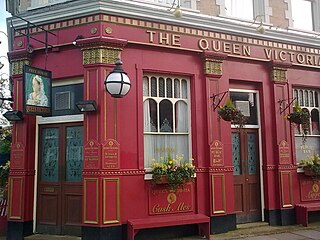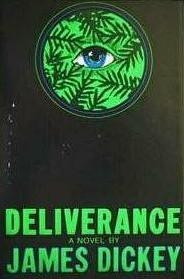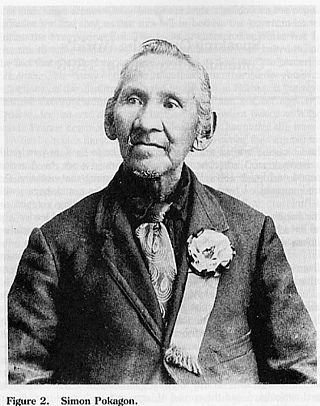Related Research Articles

The Völsunga saga is a legendary saga, a late 13th-century prose rendition in Old Norse of the origin and decline of the Völsung clan. It is one of the most famous legendary sagas and an example of a "heroic saga" that deals with Germanic heroic legend.

Dowagiac is a city in Cass County in the U.S. state of Michigan. The population was 5,879 at the 2010 census. It is part of the South Bend–Mishawaka, IN-MI, Metropolitan Statistical Area.

The Potawatomi, also spelled Pottawatomi and Pottawatomie, are a Native American people of the Great Plains, upper Mississippi River, and western Great Lakes region. They traditionally speak the Potawatomi language, a member of the Algonquin family. The Potawatomi call themselves Neshnabé, a cognate of the word Anishinaabe. The Potawatomi are part of a long-term alliance, called the Council of Three Fires, with the Ojibway and Odawa (Ottawa). In the Council of Three Fires, the Potawatomi are considered the "youngest brother" and are referred to in this context as Bodéwadmi, a name that means "keepers of the fire" and refers to the council fire of three peoples.

The Hurricane is a 1937 film set in the South Seas, directed by John Ford and produced by Samuel Goldwyn Productions, about a Polynesian who is unjustly imprisoned. The climax features a "hurricane" generated through special effects. It stars Dorothy Lamour and Jon Hall, with Mary Astor, C. Aubrey Smith, Thomas Mitchell, Raymond Massey, John Carradine, and Jerome Cowan. James Norman Hall, Jon Hall's uncle, co-wrote the novel of the same name on which The Hurricane is based.

Pokagon State Park is an Indiana state park in the northeastern part of the state, near the village of Fremont and 5 miles (8 km) north of Angola. It was named for the 19th-century Potawatomi chief, Leopold Pokagon, and his widely known son, Simon Pokagon, at Richard Lieber's suggestion. The 1,260-acre (5.1 km2) park has an inn, camping facilities, and a staff of full-time naturalists. Pokagon receives nearly 640,000 visitors annually.

The Queen Victoria is the Victorian public house in the BBC soap opera, EastEnders. It has the fictional address of 46 Albert Square, Walford, London E20.

Birch bark or birchbark is the bark of several Eurasian and North American birch trees of the genus Betula.

Leopold Pokagon was a Potawatomi Wkema (leader). Taking over from Topinbee, who became the head of the Potawatomi of the Saint Joseph River Valley in Michigan, a band that later took his name.

"The Three Little Men in the Wood" or "The Three Little Gnomes in the Forest" is a German fairy tale collected in 1812 by the Brothers Grimm in Grimm's Fairy Tales. Andrew Lang included it in The Red Fairy Book (1890) as "The Three Dwarfs," and a version of the tale appears in A Book of Dwarfs (1964) by Ruth Manning-Sanders.

Duma Key is a novel by American writer Stephen King published on January 22, 2008, by Scribner. The book reached No. 1 on the New York Times Best Seller list. It is King's first novel to be set in Florida, as well as the first to be set in Minnesota. The dust jacket features holographic lettering.

Deliverance (1970) is the debut novel of American writer James Dickey, who had previously published poetry. It was adapted into the 1972 film of the same name directed by John Boorman.

Simon Pokagon was a member of the Pokagon Band of Potawatomi Indians, an author, and a Native American advocate. He was born near Bertrand in southwest Michigan Territory and died on January 28, 1899, in Hartford, Michigan. Dubbed the "Red Man's Longfellow" by literary fans, Pokagon was often called the "Hereditary and Last Chief" of the tribe by the press. He was a son of his tribe's patriarch, Leopold Pokagon.

Dick Sand, A Captain at Fifteen is a Jules Verne novel published in 1878. It deals primarily with the issue of slavery, and the African slave trade by other Africans in particular.

Black Partridge or Black Pheasant was a 19th-century Peoria Lake Potawatomi chieftain. Although a participant in the Northwest Indian War and the War of 1812, he was a friend to early American settlers and an advocate for peaceful relations with the United States. He and his brother Waubonsie both attempted to protect settlers during the Battle of Fort Dearborn after they were unsuccessful in preventing the attack.

William Russell Sweet was an early American artist, painter and sculptor.

Bag of Bones or Stephen King's Bag of Bones, is an American horror television miniseries adaptation of Stephen King's 1998 novel of the same name. Directed by Mick Garris from Matt Venne's screenplay, it was first aired in 2011 on the A&E Network in two parts. When shown on British Channel 5 on 29 December 2012, it was however shown as a single 2+1⁄2-hour film.

Lake James is a natural lake located in the northeast corner of the state of Indiana in the United States. It is popular as a place for boating and fishing and has a wide variety of wildlife. As the state's fourth-largest natural lake, it has over 1,200 acres (490 ha) of surface water, and consists of three basins. Its water quality is ranked among the best in Indiana lakes. The lake is the largest of a group of lakes known as the James Lake Chain. These lakes are located mostly in Steuben County, Indiana, but also extend into southern Michigan.

The death of Tom Thomson, the Canadian painter, occurred on 8 July 1917, on Canoe Lake in Algonquin Provincial Park in Nipissing District, Ontario, Canada. After Thomson drowned in the water, his upturned canoe was discovered later that afternoon and his body eight days later. Many theories regarding Thomson's death—including that he was murdered or committed suicide—have become popular in the years since his death, though these ideas lack any substantiation.
Patrick William Kruse, also known as Pat Kruse, is a Native American culture teacher and artist that specializes in birchbark art and quillwork. He works alongside his son Gage to create birch bark paintings.
References
- ↑ MSU Press Book Description
- ↑ Pokagon, Simon (2011). Ogimawkwe Mitigwaki. East Lansing: Michigan State University Press. pp. 15–17. ISBN 9780870139871.